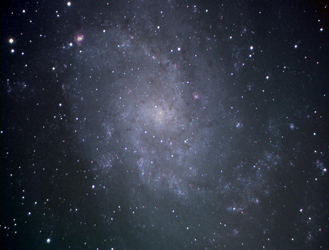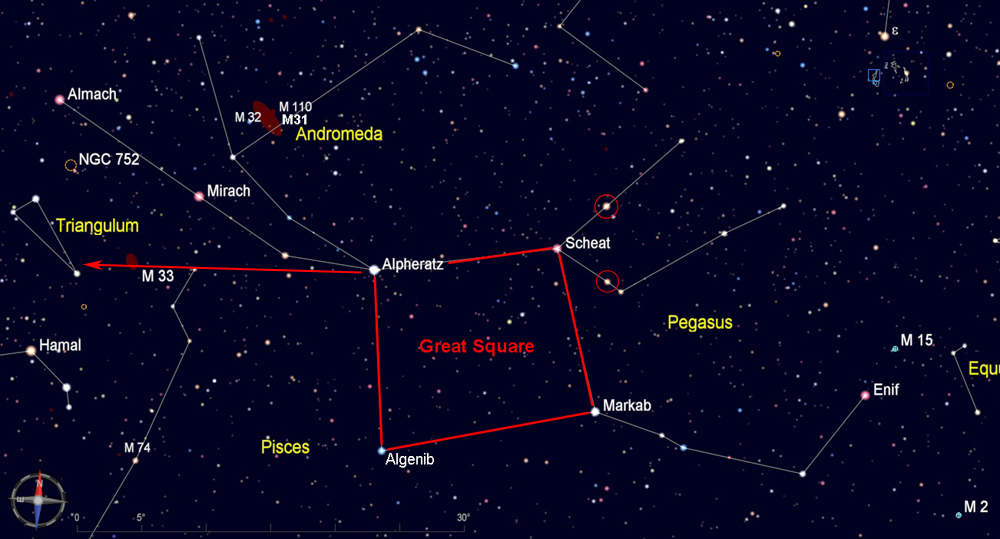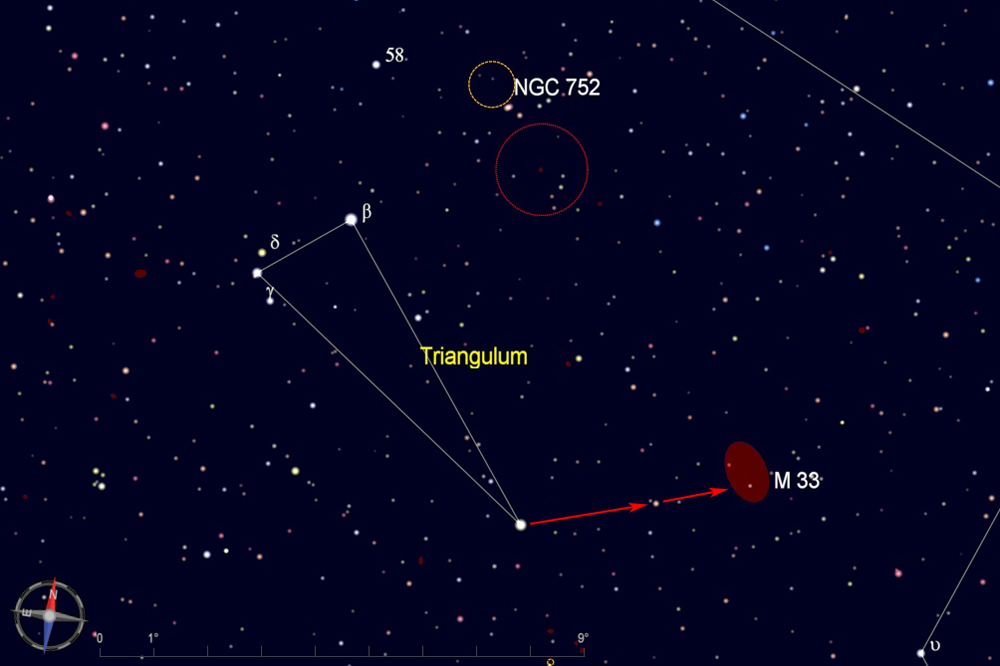
Start by finding the Great Square of Pegasus, which rises in the eastern sky during the early fall evenings, is high overhead later in the fall, and sinks in the western sky during early winter. To be sure you know how the square is oriented in the sky, look for the two stars outside the northwest corner of the square (circled in the chart below) that form a small triangle with Scheat.
Using the northern edge of the Great Square as a pointer, extend a line to the east about twice the size of the Square, and you will arrive in the vicinity of the constellation Triangulum, whose 3 brightest stars form a long and narrow triangle.

From the narrow tip of the triangle, move to the west about 2.5 degrees, which is roughly the distance between the other two stars in the triangle. As shown in the chart below, you should arrive at a 6th magnitude star that will be visible in binoculars or a finderscope. Move the same distance again in the same direction, and you will reach the location of Messier 33. Look for a very large but faint oval. To see it with your telescope, use the lowest power you can, make sure your eyes are dark adapted, and look for a patch that is slightly brighter than the surrounding sky.
